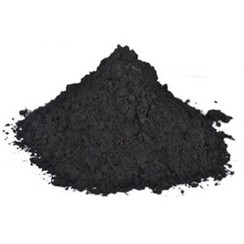You have no items in your shopping cart
Praseodymium
Praseodymium is a chemical element with the symbol Pr and atomic number 59. It is the third member of the lanthanide series and is traditionally considered to be one of the rare-earth metals. Praseodymium is a soft, silvery, malleable and ductile metal, valued for its magnetic, electrical, chemical, and optical properties. It is too reactive to be found in native form, and pure praseodymium metal slowly develops a green oxide coating when exposed to air.
Praseodymium always occurs naturally together with the other rare-earth metals. It is the fourth most common rare-earth element, making up 9.1 parts per million of the Earth's crust, an abundance similar to that of boron. In 1841, Swedish chemist Carl Gustav Mosander extracted a rare-earth oxide residue he called didymium from a residue he called "lanthana", in turn separated from cerium salts. In 1885, the Austrian chemist Baron Carl Auer von Welsbach separated didymium into two elements that gave salts of different colours, which he named praseodymium and neodymium. The name praseodymium comes from the Greek prasinos (πράσινος), meaning "green", and didymos (δίδυμος), "twin".
Like most rare-earth elements, praseodymium most readily forms the +3 oxidation state, which is the only stable state in aqueous solution, although the +4 oxidation state is known in some solid compounds and, uniquely among the lanthanides, the +5 oxidation state is attainable in matrix-isolation conditions. Aqueous praseodymium ions are yellowish-green, and similarly praseodymium results in various shades of yellow-green when incorporated into glasses. Many of praseodymium's industrial uses involve its ability to filter yellow light from light sources.

